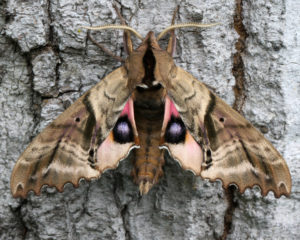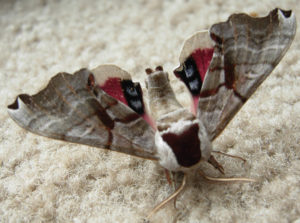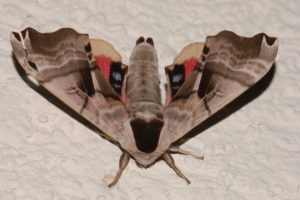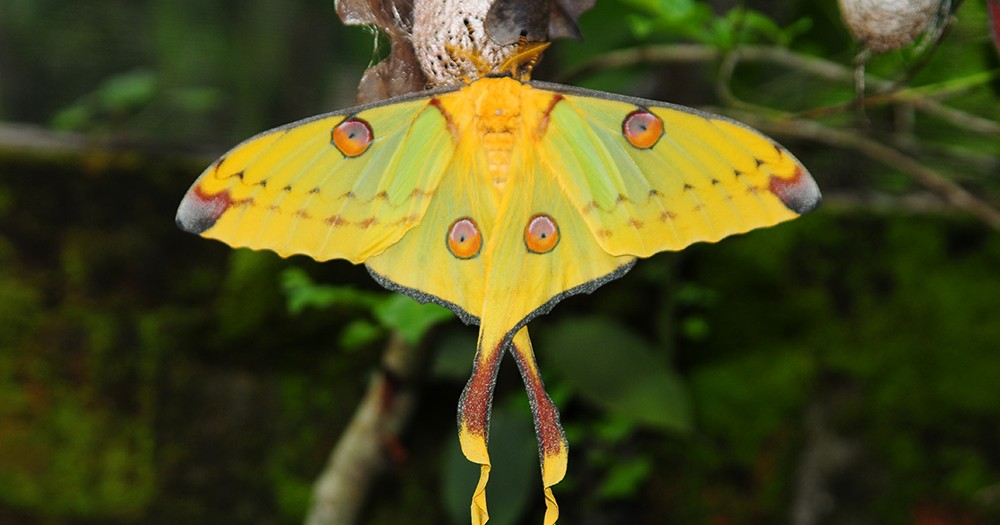Twin Spotted Sphinx Moth (Smerinthus jamaicensis)
The twin spotted sphinx moth is a member of the hawk moth family. The prominent eyes on both sides of its wings have earned it its name. British entomologist Dru Drury first described the species in 1773.
Naturallycuriouswithmaryholland.com
Scientific Classification
- Family: Sphingidae
- Genus: Smerinthus
- Scientific Name: Smerinthus jamaicensis
Description and Identification
Caterpillar
The larva has a granulose physical structure, with a pale yellow or bluish-green body marked red or cream. Its head is triangular and light-green, with a cream-colored band along its vertex. A thin caudal horn is present, extending straight beyond the posterior end of its body, blue or black. The underside tends to be blue or black, with a faint subdorsal line seen under the thorax.
Pupa
Once fully mature, they begin to pupate.
Adult Moth
Sexual Dimorphism: Present.
Color and Appearance:
Males-
Forewing: When the wings are opened, they are gray with black and white markings. When closed, the pattern becomes less prominent.
Hindwing: When opened and closed, they are red with a pale yellow border. A blue patch may be present at times, either as a single eyespot or separated by black bands to form two or even three eyespots.
Females-
Forewing: When the wings are opened, they are yellowish-brown with white and dark brown markings. When closed, the colors are still visible but less clearly.
Hindwing: When opened and closed, their hindwings are similar to the males, red, bordered in pale yellow, with a bluish eyespot on both sides.
Average Wingspan: 4.5–8.3 cm
Flight Pattern: Not recorded
Season: June to August in the north; April to October in the south
Egg
Once laid, the eggs require a week to hatch.
Quick Facts
| Distribution | North America |
| Habitat | Forests, suburbs, and areas near rivers and lakes |
| Predators | Birds, bats |
| Lifespan of Adults | Not recorded |
| Host Plants | Apple, ash, birch, elm, peach, plums, poplar, and willow |
| Adult Diet | Does not feed |
Scientific Classification
- Family: Sphingidae
- Genus: Smerinthus
- Scientific Name: Smerinthus jamaicensis




